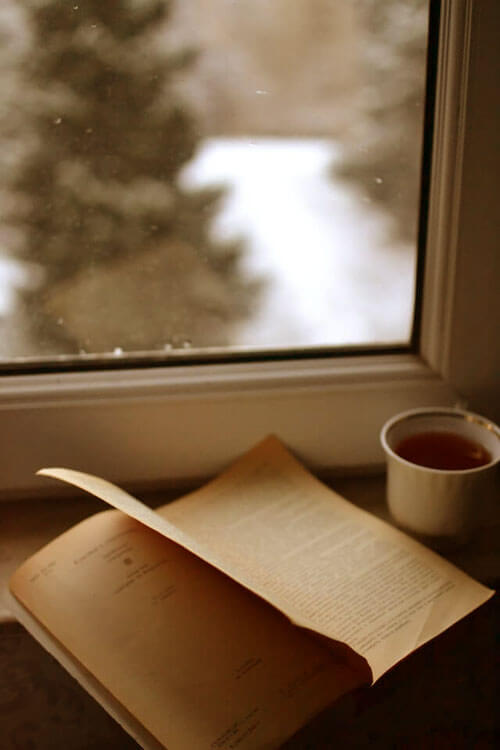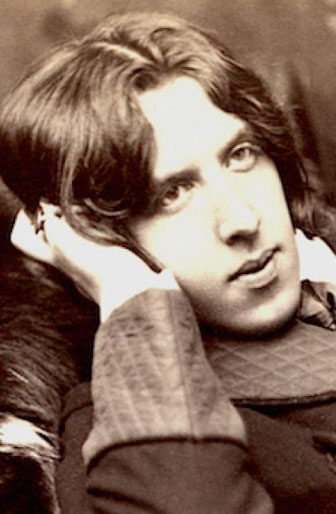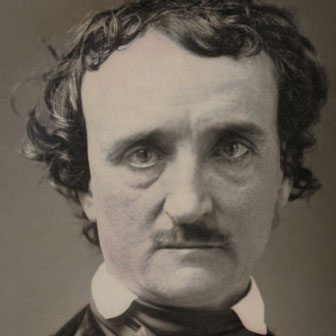Exploring Melancholy: Understanding the Power of Sad Poetry
Tips for Reading
Sad Love PoetryReading sad love poetry can be an incredibly moving and transformative experience. Here are a few tips for getting the most out of your reading:
- Choose the Right Poets
Not all poets are created equal when it comes to sad love poetry. Some writers have a gift for capturing the nuances and complexities of heartbreak and loss, while others may focus more on the lighter side of love. Choose poets who speak to your own experiences and emotions, and whose words resonate with you.- Pay Attention to Language and Imagery
The language and imagery used in sad love poetry can be incredibly powerful. Pay attention to the way that the poet uses words and phrases to convey emotion, and how they create vivid images in your mind. Look for metaphors and other figures of speech that help to capture the complexity of human emotions.- Read Aloud
Sad love poetry is meant to be heard as well as read. Try reading the poems aloud to yourself, paying attention to the rhythm and flow of the words. You may find that hearing the poem spoken out loud can deepen your understanding of the poet's intent and emotions.
Annabel Lee by Edgar Allan Poe
As human beings, we experience a range of emotions. Some of them are positive and bring us joy, while others are negative and make us feel sad or melancholic. Melancholy is a complex emotion that can be difficult to define, but it is often associated with feelings of sadness, grief, and longing. Many poets throughout history have written about their experiences with melancholy, and their work continues to resonate with readers today. In this article, we will explore the power of sad poetry and the ways in which it can help us to understand and cope with our own feelings of melancholy.
What is Melancholy?
Melancholy is a complex emotion that can be difficult to define. It is often associated with feelings of sadness, grief, and longing, but it is also characterized by a sense of introspection and contemplation. Melancholy can be triggered by a variety of factors, including loss, loneliness, and a sense of disconnection from the world around us. It is a deep, intense emotion that can be both painful and cathartic.
The Power of Sad Poetry
Sad poetry has the power to help us understand and process our own feelings of melancholy. When we read a poem that captures the essence of our own emotional experience, it can be a deeply cathartic and transformative experience. Poetry allows us to put words to our feelings and to connect with others who have experienced similar emotions. Through the power of language, poetry can help us to make sense of our own emotional landscape and to find meaning and purpose in our lives.
Historical Context of Melancholy in Poetry
Melancholy has a rich history in poetry, dating back to the ancient Greeks and Romans. In the Middle Ages, melancholy was associated with the four humors and was thought to be caused by an excess of black bile. During the Renaissance, melancholy became a popular theme in literature and was often associated with the melancholic temperament, a personality type characterized by introspection, sensitivity, and creativity. Many famous poets throughout history, including John Keats, Emily Dickinson, and Sylvia Plath, have written about their own experiences with melancholy and have created works that continue to resonate with readers today.
Analyzing Sad Poems
When we read a sad poem, it is important to take the time to analyze and understand the emotions that it evokes. One way to do this is to pay attention to the language and imagery used in the poem. For example, if a poem uses dark, brooding imagery and language, it may be evoking feelings of sadness and grief. By paying close attention to the details of a poem, we can gain a deeper understanding of the emotions that it is trying to convey.
Coping with Melancholy
While reading sad poetry can be a powerful tool for coping with melancholy, it is not the only solution. There are a variety of strategies that can be used to help cope with feelings of sadness and grief. These can include talking to a therapist or counselor, engaging in creative activities like writing or art, and practicing self-care activities like exercise and meditation. It is important to find a coping strategy that works best for you and to be gentle and patient with yourself as you navigate your emotions.
Melancholy is a complex and intense emotion that can be difficult to understand and process. The power of sad poetry lies in its ability to help us connect with our own emotions and to find meaning and purpose in our lives. Sad poetry has the power to help us make sense of our emotions and to connect with others who have experienced similar feelings. By exploring the rich history of melancholy in poetry and analyzing the language and imagery used in sad poems, we can gain a deeper understanding of our own emotional experiences. While reading sad poetry may not be the only solution for coping with melancholy, it can be a powerful tool for those looking to process and understand their emotions. With the right resources and support, anyone can learn to cope with and manage their feelings of melancholy.
Sad Love Poetry
I shut my eyes and all the world drops dead;
I lift my lids and all is born again.
(I think I made you up inside my head.)
The stars go waltzing out in blue and red,
And arbitrary blackness gallops in:
I shut my eyes and all the world drops dead.
I dreamed that you bewitched me into bed
And sung me moon-struck, kissed me quite insane.
(I think I made you up inside my head.)
God topples from the sky, hell's fires fade:
Exit seraphim and Satan's men:
I shut my eyes and all the world drops dead.
I fancied you'd return the way you said,
But I grow old and I forget your name.
(I think I made you up inside my head.)
I should have loved a thunderbird instead;
At least when spring comes they roar back again.
I shut my eyes and all the world drops dead.
(I think I made you up inside my head.)
When it comes to love, it's no secret that poetry has been one of the most powerful and enduring forms of artistic expression. The combination of language, rhythm, and imagery can evoke the deepest emotions, from the ecstatic highs of new love to the poignant sadness of heartbreak.
As a lover of poetry myself, I have found that sad love poetry can be especially poignant and evocative. It has the power to express the inexpressible, to give voice to the pain and heartache that we all feel at one time or another. In this article, we will explore the art of reading and writing sad love poetry, with tips and techniques for creating works that truly resonate with the reader.
The Power of Sad Love Poetry
There is something undeniably powerful about sad love poetry. It can capture the depth and intensity of our emotions in a way that few other art forms can. It has the power to transport us to a different time and place, to bring back memories that we may have long forgotten. Whether we are reading the works of great poets such as John Keats or Emily Dickinson, or writing our own poetry, sad love poetry can be a powerful tool for emotional expression and healing.

Sad Poems About Death
When death comes
like the hungry bear in autumn;
when death comes and takes all the bright coins from his purse
to buy me, and snaps the purse shut;
when death comes
like the measle-pox
when death comes
like an iceberg between the shoulder blades,
I want to step through the door full of curiosity, wondering:
what is it going to be like, that cottage of darkness?
And therefore I look upon everything
as a brotherhood and a sisterhood,
and I look upon time as no more than an idea,
and I consider eternity as another possibility,
and I think of each life as a flower, as common
as a field daisy, and as singular,
and each name a comfortable music in the mouth,
tending, as all music does, toward silence,
and each body a lion of courage, and something
precious to the earth.
When it's over, I want to say all my life
I was a bride married to amazement.
I was the bridegroom, taking the world into my arms.
When it's over, I don't want to wonder
if I have made of my life something particular, and real.
I don't want to find myself sighing and frightened,
or full of argument.
I don't want to end up simply having visited this world
Mary Oliver is a poet who wrote about nature, grief, and the beauty of life. Today, we will talk about something that touches us all – death. Specifically, we will delve into the subject of sad poems about death. Death is an inevitable part of life, and while it can be difficult to confront, it is a natural and universal experience that we all share. Sad poems about death allow us to express our grief and honor those who have passed on. In this article, we will explore the beauty and power of sad poems about death, and how they can help us navigate the complex emotions that come with loss.
The Beauty of Sad Poems About Death
Grief is a complex and powerful emotion. It can be overwhelming, all-consuming, and difficult to articulate. Sad poems about death provide a way to channel this emotion into something tangible and beautiful. Poetry is a powerful medium for expressing the depth of our emotions, and sad poems about death are no exception. They allow us to honor those we have lost, process our grief, and find a way to move forward.
The Power of Language
Language is a powerful tool that can help us connect with others and express our deepest emotions. Sad poems about death use language in a way that is both beautiful and profound. They capture the essence of what it means to experience loss, and give voice to the complex emotions that come with grief. Poets use language to paint vivid images of death and dying, and to explore the themes of love, loss, and the fleeting nature of life.
The Importance of Voice
Every poet has a unique voice, and sad poems about death are no exception. The way a poet expresses their grief and loss is deeply personal, and their voice can help us connect with their experiences. Some poets may use stark, minimalist language to express their grief, while others may use lush, descriptive language to paint a vivid picture of their emotions. Whatever the approach, the voice of a poet can help us find solace and understanding in the face of loss.
The Language of Nature
Nature is a recurring theme in sad poems about death, and for good reason. The natural world is a powerful reminder of the cycle of life and death, and can provide a sense of comfort and reassurance in the face of loss. Poets often use images of the natural world to express their grief and explore the themes of mortality and impermanence. By connecting our experiences of loss to the natural world, we can find a sense of peace and acceptance.
The Healing Power of Poetry
Sad poems about death can be a powerful tool for healing. They provide a way to express our grief and connect with the experiences of others. By reading and writing poetry, we can find solace and comfort in the face of loss. Poetry allows us to express our emotions in a way that is both personal and universal, and can help us navigate the complex emotions that come with grief.
Sad poems about death can help us navigate the complex emotions that come with loss. They provide a way to channel our grief into something tangible and beautiful, and can help us find solace and comfort in the face of loss. The power of language, the importance of voice, and the recurring theme of nature all make sad poems about death a powerful tool for healing. By exploring the beauty and power of sad poems about death, we can find a way to honor those we have lost and move forward with hope and resilience.

Sad Poems about Love and Pain
As I sit here, surrounded by the beauty of nature, I can't help but think about the pain and sadness that we all experience in our lives. As a poet, I have always been drawn to the emotions that come with the human experience. Today, I want to share with you some of my thoughts on sad poems about life and pain.
When we think about sadness, it can often feel overwhelming. It can be difficult to put into words the emotions that we are feeling. But as poets, we have a unique ability to capture those feelings and express them in a way that others can understand. In this article, we will explore some of the best sad poems about life and pain, and how they can help us to navigate our own experiences of sadness.
What is a Sad Poem?
Before we dive into the best sad poems about life and pain, let's first explore what a sad poem actually is. A sad poem is one that explores the emotions of sadness, grief, and loss. It can be about a specific event or experience, or it can be more abstract, exploring the general feeling of sadness that we all experience at some point in our lives.
The Power of Sad Poems
Sad poems have the power to move us in a way that few other forms of art can. They can help us to process our emotions, to feel seen and heard, and to find comfort in the shared experiences of others. When we read a sad poem that resonates with us, it can feel like the poet has reached into our hearts and put into words the emotions that we have been struggling to express.
The Best Sad Poems About Life and Pain

Now that we have a better understanding of what a sad poem is and the power that it can hold, let's explore some of the best sad poems about life and pain.
"When Death Comes" by Mary Oliver
Mary Oliver was often drawn to the topic of death. In "When Death Comes," she explores the idea of death as a natural part of life. The poem begins with the lines "When death comes / like the hungry bear in autumn," setting a tone of inevitability and acceptance. Throughout the poem, she explores the idea of what it means to truly live, and how we can find meaning and purpose in the face of our own mortality.
"Do Not Go Gentle Into That Good Night" by Dylan Thomas
In "Do Not Go Gentle Into That Good Night," Dylan Thomas explores the idea of fighting against death. The poem is a plea to his father to resist death and to "rage, rage against the dying of the light." While the poem is certainly sad, it is also a powerful call to action, urging us to live our lives to the fullest and to resist the inevitability of death.
"Funeral Blues" by W.H. Auden
In "Funeral Blues," W.H. Auden explores the emotions of grief and loss. The poem begins with the lines "Stop all the clocks, cut off the telephone / Prevent the dog from barking with a juicy bone," setting a somber and melancholic tone. Throughout the poem, Auden explores the idea of what it means to lose someone we love, and the ways in which that loss can consume us.
"The Love Song of J. Alfred Prufrock" by T.S. Eliot
While not necessarily a "sad" poem in the traditional sense, "The Love Song of J. Alfred Prufrock" by T.S. Eliot explores the feelings of isolation and loneliness that many of us experience in our lives. The poem is a meditation on the human experience, and the ways in which we struggle to connect with others. It is a poem about the fear of aging and the fear of death, and the ways in which those fears can consume us. While not explicitly about sadness, the poem is a powerful exploration of the human condition and the emotions that come with it.
The Healing Power of Sad Poems
While it may seem counterintuitive, sad poems can actually be incredibly healing. When we read a sad poem that resonates with us, it can help us to process our own emotions and to feel seen and heard. It can be a way of connecting with others who have experienced similar emotions and experiences, and of finding comfort in the shared human experience of sadness.

Using Sad Poems to Process Emotions
If you are going through a difficult time and are struggling with sadness or grief, reading sad poems can be a helpful way to process your emotions. It can be a way of giving voice to the feelings that you are experiencing, and of finding comfort in the shared experiences of others. Some tips for using sad poems to process your emotions include:
Take your time. Don't rush through the poem, but allow yourself to sit with the emotions that it brings up.
Reflect on the poem. Think about what it means to you, and how it relates to your own experiences.
Write about your feelings. After reading the poem, take some time to journal or write about your own emotions and experiences.
Share with others. Consider sharing the poem with someone you trust, and talking to them about how it made you feel.
Sad Poems as a Form of Self-Care

In addition to helping us to process our emotions, reading sad poems can also be a form of self-care. It can be a way of taking time for ourselves and our emotions, and of giving ourselves permission to feel sad. Some tips for using sad poems as a form of self-care include:
Create a safe space. Find a quiet and comfortable place where you can read and reflect on the poem without distractions.
Set aside time. Make a commitment to yourself to set aside time to read and reflect on the poem.
Choose a poem that resonates with you. Look for a poem that speaks to your own experiences of sadness or grief.
Allow yourself to feel. Don't try to suppress your emotions, but allow yourself to feel whatever comes up as you read the poem.
While sadness and pain can be difficult emotions to navigate, they are an inevitable part of the human experience. As poets, we have a unique ability to capture these emotions and to help others to navigate them. By reading sad poems about life and pain, we can find comfort in the shared experiences of others and can give voice to our own emotions. I hope that this article has been helpful in exploring the power of sad poetry and the ways in which it can be a healing force in our lives.
A Journey Through Sadness: Exploring the Most Famous Sad Poems

Introduction to the World of Sad Poems
As I sit down to write about sadness, my heart feels heavy, and my mind is cluttered with memories of lost loves, lost hopes, and lost dreams. Sadness is an emotion that we all feel at some point in our lives. It is a part of the human experience that binds us together, no matter who we are or where we come from. Sadness can be triggered by many things, such as the death of a loved one, the end of a relationship, or even just a rainy day. But one thing is for sure – sadness has inspired some of the greatest poems ever written.
Poetry has the power to capture the essence of human emotions, and sadness is no exception. Through the centuries, many poets have explored the depths of human suffering and pain, and their works have touched the hearts of millions of people around the world. In this article, we will take a journey through some of the most famous sad poems of all time, exploring their themes, imagery, and the impact they have had on literature and culture.
"Wild Geese" by Mary Oliver – A Poem of Acceptance and Self-Love
One of her most beloved poems, "Wild Geese," speaks to the importance of self-acceptance and self-love. It is a reminder that no matter what we are going through, we are never alone. This poem begins with the lines, "You do not have to be good. / You do not have to walk on your knees / For a hundred miles through the desert, repenting." These words are a powerful reminder that we do not have to be perfect, or even try to be perfect. We can simply be ourselves, and that is enough.
"The Love Song of J. Alfred Prufrock": A Portrait of Modern Life: An Exploration of T.S. Eliot's Most Famous Poem
"The Love Song of J. Alfred Prufrock" is a haunting and beautiful poem that speaks to the heartache of unfulfilled love and missed opportunities. It is a poem of regret and longing, and it captures the deep sadness that can come with unrequited love. The lines, "I have measured out my life with coffee spoons" and "Do I dare / Disturb the universe?" are particularly poignant, and they speak to the sense of loneliness and isolation that can come with heartbreak.
The poem is a portrait of modern life, and a meditation on the anxieties and fears that plague us all: a portrait of a man who is struggling to find his place in the world, and who is haunted by the fear of aging and death.
The poem's imagery is complex and layered, with Eliot's use of allusion and symbolism creating a sense of deep unease and tension. The themes of love, isolation, and the human condition are explored in depth, with the poem serving as a reminder of the complexities of modern life.
"The Love Song of J. Alfred Prufrock" has had a lasting impact on literature and culture, with its themes and imagery inspiring writers and artists for generations. It is a reflection of the human experience, and a reminder that even in the midst of our fears and anxieties, we can find beauty and meaning in the world around us.
"Funeral Blues" by W.H. Auden – A Poem of Grief and Loss
"Funeral Blues" is a powerful poem that captures the raw emotion of grief and loss. It is a poem that has been widely used in popular culture, including in the movie "Four Weddings and a Funeral." The lines, "Stop all the clocks, cut off the telephone, / Prevent the dog from barking with a juicy bone," are particularly powerful, as they speak to the feeling of wanting the world to stop and acknowledge our pain. This is a beautiful and poignant poem that speaks to the universal experience of grief.
"One Art" by Elizabeth Bishop – A Poem of Acceptance and Resilience
"One Art" is a poem that speaks to the importance of accepting loss and moving forward. It is a reminder that we are capable of great resilience, even in the face of heartbreak. The lines, "The art of losing isn't hard to master; / so many things seem filled with the intent / to be lost that their loss is no disaster," are particularly powerful, as they remind us that loss is a part of life, and that we can find strength in the midst of it.
"When Great Trees Fall" by Maya Angelou – A Poem of Tribute and Celebration
"When Great Trees Fall" is a beautiful tribute to those who have passed away. It is a poem that speaks to the power of love and the importance of cherishing those we have lost. The lines, "And when great souls die, / after a period peace blooms, / slowly and always / irregularly. Spaces fill / with a kind of / soothing electric vibration," are particularly poignant, as they speak to the sense of peace that can come with the passing of a loved one.
"Do Not Go Gentle into That Good Night" by Dylan Thomas – A Poem of Resistance and Fighting Spirit
"Do Not Go Gentle into That Good Night" is a powerful and emotionally defiant plea for life in the face of death that speaks to the importance of fighting for what we believe in, even in the face of death. It is a poem that has been widely interpreted, but at its core, it is a reminder that we have the power to resist and fight, even when all seems lost. The lines, "Rage, rage against the dying of the light" are particularly powerful, as they remind us that even in the face of death, we can still find the strength to stand up and fight.
The poem is a tribute to Thomas' dying father, but it is also a call to arms for anyone facing their own mortality. The poem's repeated refrain, "Rage, rage against the dying of the light," is a reminder that life is worth fighting for, no matter what the odds.
The poem's imagery is both beautiful and poignant, with Thomas' use of metaphor and symbolism creating a sense of urgency and desperation. The themes of love, loss, and the passage of time are explored in depth, with the poem serving as a reminder that we must cherish every moment of our lives, and fight to hold onto them as long as we can.
"Do Not Go Gentle into That Good Night" has inspired countless writers, artists, and musicians, and its legacy continues to this day. It is a testament to the power of words, and to the enduring nature of the human spirit.
"Annabel Lee": A Poem of Eternal Love: Edgar Allan Poe's Ode to His Beloved
"Annabel Lee" is a haunting and beautiful poem that speaks to the power of love and the pain of loss, inspired by Poe's own experiences with love and grief. The poem tells the story of a young woman named Annabel Lee, who is loved by the narrator with a love that is so strong, it transcends even death. The lines, "But our love it was stronger by far than the love / Of those who were older than we- / Of many far wiser than we," are particularly poignant, as they speak to the power of love to endure beyond death.
The poem's imagery is beautiful and ethereal, with Poe's use of language creating a sense of otherworldly beauty. The themes of love, death, and grief are explored in depth, with the poem serving as a powerful reminder of the enduring nature of love.
"Annabel Lee" has had a lasting impact on popular culture, with references to the poem appearing in everything from literature to music. It is a testament to the power of love and the human spirit, and a beautiful tribute to those who have passed on.
"The Raven": A Tale of Lost Love and Despair: A Closer Look at Edgar Allan Poe's Masterpiece
Edgar Allan Poe's "The Raven" is perhaps one of the most well-known and widely read poems in the world. It tells the story of a man who is grieving the loss of his beloved Lenore, and who is visited by a mysterious raven that repeats the word "Nevermore" to him. The poem is a haunting tale of loss, despair, and the futility of trying to escape the grip of death.
The imagery in "The Raven" is rich and vivid, with Poe's use of alliteration, assonance, and rhyme creating a sense of unease and tension throughout the poem. The repeated refrain of "Nevermore" serves as a reminder of the man's loss, and the raven itself becomes a symbol of death, tormenting the man with its constant presence.
"The Raven" has had a lasting impact on popular culture, with references to the poem appearing in everything from movies to music to literature. It is a timeless work of art that continues to captivate and inspire readers to this day.
"I Carry Your Heart with Me" by E.E. Cummings – A Poem of Eternal Love
"I Carry Your Heart with Me" is a beautiful and uplifting poem that speaks to the power of love to transcend time and space. It is a reminder that even in the face of heartbreak, love endures. The lines, "I carry your heart with me / I carry it in my heart" are particularly powerful, as they speak to the idea that love is not something we can lose, but rather something we carry with us always.
"The Broken Tower" by Hart Crane – A Poem of Struggle and Despair
"The Broken Tower" is a beautiful and haunting poem that speaks to the struggle of the creative process. It is a reminder that even in the face of despair and struggle, we can find beauty and meaning in our work. The lines, "And so it was I entered the broken world / To trace the visionary company of love, its voice / An instant in the wind," are particularly poignant, as they speak to the idea that even in the midst of darkness, there is always the possibility of finding light.
"Ode to a Nightingale": John Keats' Tribute to Nature – An Exploration of One of Keats' Most Famous Poems
John Keats' "Ode to a Nightingale" is a tribute to the beauty and power of nature, and a meditation on the fleeting nature of human existence. The poem is a celebration of the nightingale's song, and a lament for the transience of life.
The poem's imagery is rich and vivid, with Keats' use of metaphor and symbolism creating a sense of wonder and awe. The themes of beauty, mortality, and the human condition are explored in depth, with the poem serving as a reminder of the fragility of life and the power of the natural world.
"Ode to a Nightingale" has had a lasting impact on literature and culture, with its themes and imagery inspiring writers and artists for generations. It is a beautiful tribute to the power of nature, and a reminder of the beauty that surrounds us, even in the darkest of times.
"When I Consider How My Light is Spent": A Meditation on Blindness – An Analysis of John Milton's Famous Poem
John Milton's "When I Consider How My Light is Spent" is a meditation on blindness, mortality, and the search for meaning in the face of adversity. The poem is a reflection on Milton's own struggles with blindness, and his search for a way to continue his work as a writer and thinker.
The poem's imagery is powerful and evocative, with Milton's use of metaphor and symbolism creating a sense of profound sadness and loss. The themes of faith, mortality, and the human condition are explored in depth, with the poem serving as a reminder of the power of the human spirit, even in the darkest of times.
"When I Consider How My Light is Spent" has had a lasting impact on literature and culture, with its themes and imagery inspiring writers and thinkers for generations. It is a testament to the power of the human spirit, and a reminder that even in the face of adversity, we can find meaning and purpose in our lives.
"In Memoriam A.H.H.": A Poem of Grief and Remembrance – An Exploration of Tennyson's Masterpiece
Alfred Lord Tennyson's "In Memoriam A.H.H." is a poem of grief and remembrance, inspired by the death of Tennyson's dear friend Arthur Hallam. The poem is a tribute to Hallam, and a meditation on the nature of grief and loss.
The poem's imagery is beautiful and moving, with Tennyson's use of language creating a sense of profound sorrow and longing. The themes of love, loss, and the passage of time are explored in depth, with the poem serving as a reminder of the enduring power of memory and the human spirit.
"In Memoriam A.H.H." has had a lasting impact on literature and culture, with its themes and imagery inspiring writers and artists for generations. It is a beautiful tribute to the power of friendship and love, and a reminder that even in the face of tragedy, we can find comfort and solace in the memories of those we have loved and lost.
"The Waste Land": A Portrait of a Broken World – An Analysis of T.S. Eliot's Most Famous Poem
T.S. Eliot's "The Waste Land" is a portrait of a broken world, and a meditation on the despair and hopelessness that pervade modern life. The poem is a reflection on the disillusionment and fragmentation of the modern world, and a plea for renewal and regeneration.
The poem's imagery is dark and haunting, with Eliot's use of symbolism and allusion creating a sense of deep despair and isolation. The themes of death, rebirth, and the human condition are explored in depth, with the poem serving as a reminder of the complexities and contradictions of modern life.
"The Waste Land" has had a lasting impact on literature and culture, with its themes and imagery inspiring writers and artists for generations. It is a reflection of the human experience, and a reminder that even in the darkest of times, we can find hope and renewal in the power of language and art.
"The Road Not Taken": A Meditation on Choice and Regret – An Exploration of Robert Frost's Famous Poem
Robert Frost's "The Road Not Taken" is a meditation on choice and regret, and a reflection on the paths we choose to take in life. The poem is a tribute to the power of choice, and a reminder that the decisions we make in life have the power to shape our destiny.
The poem's imagery is simple and evocative, with Frost's use of metaphor creating a sense of the importance of choice and the consequences of our decisions. The themes of regret, uncertainty, and the human condition are explored in depth, with the poem serving as a reminder of the power of our choices and the weight of our decisions.
"The Road Not Taken" has had a lasting impact on literature and culture, with its themes and imagery inspiring writers and artists for generations. It is a beautiful tribute to the power of choice and the human spirit, and a reminder that even in the face of uncertainty and regret, we have the power to shape our own destiny.
"Stopping by Woods on a Snowy Evening" by Robert Frost – A Poem of Solitude and Contemplation
"Stopping by Woods on a Snowy Evening" is a beautiful and meditative poem that speaks to the power of solitude and contemplation. It is a reminder that sometimes the most important thing we can do is simply be still and listen. The lines, "The woods are lovely, dark and deep, / But I have promises to keep, / And miles to go before I sleep," are particularly powerful, as they speak to the idea that even in the midst of stillness, there is always the promise of something more.
In the midst of heartbreak and grief, it can be difficult to find comfort and solace. Sad poems can provide a source of comfort and inspiration, and can help us to feel less alone in our pain. Whether it is a poem of acceptance and self-love, a poem of resistance and fighting spirit, or a poem of love and loss, the power of poetry to heal and comfort is undeniable. So take some time to read and reflect on the sad poems that resonate with you, and know that you are not alone in your pain.
Creative Writing Exercise – Sad Poetry
Writing Prompts – Write a Poem About:
- Write a poem about the sadness of letting go of something you once held dear.
- Write a poem about the melancholy of watching the seasons change, and feeling the fleeting nature of time.
- Write a poem about the ache of unrequited love, and the bittersweet beauty of the longing it brings.
- Write a poem about the sadness of feeling alone, even in the midst of a crowded room.
- Write a poem about the grief of losing a loved one, and the journey of learning to live without them.
- Write a poem about the sadness that comes with realizing you've outgrown someone or something you once cherished.
- Write a poem about the heartbreak of betrayal, and the struggle to trust again.
- Write a poem about the loneliness that can come with being different from those around you.
- Write a poem about the sadness of looking back on missed opportunities, and wondering what might have been.
- Write a poem about the weight of the world's suffering, and the sadness of feeling powerless to make a difference.
- Write a poem about the sadness of watching a loved one struggle with illness, and the deep desire to ease their pain.
- Write a poem about the sadness of feeling stuck in a rut, and the longing for something new.
- Write a poem about the grief of losing a pet, and the profound impact they can have on our lives.
- Write a poem about the sadness of feeling like you don't fit in, and the struggle to find your place in the world.
- Write a poem about the ache of homesickness, and the longing for a place that feels like home.
- Write a poem about the sadness that can come with growing older, and the fear of what the future holds.
- Write a poem about the weight of regret, and the sadness of realizing you can't change the past.
- Write a poem about the sadness of unfulfilled dreams, and the struggle to keep hope alive.
- Write a poem about the grief of a broken friendship, and the struggle to let go.
- Write a poem about the sadness of a world that can be cruel and unfair, and the hope for a better tomorrow.



